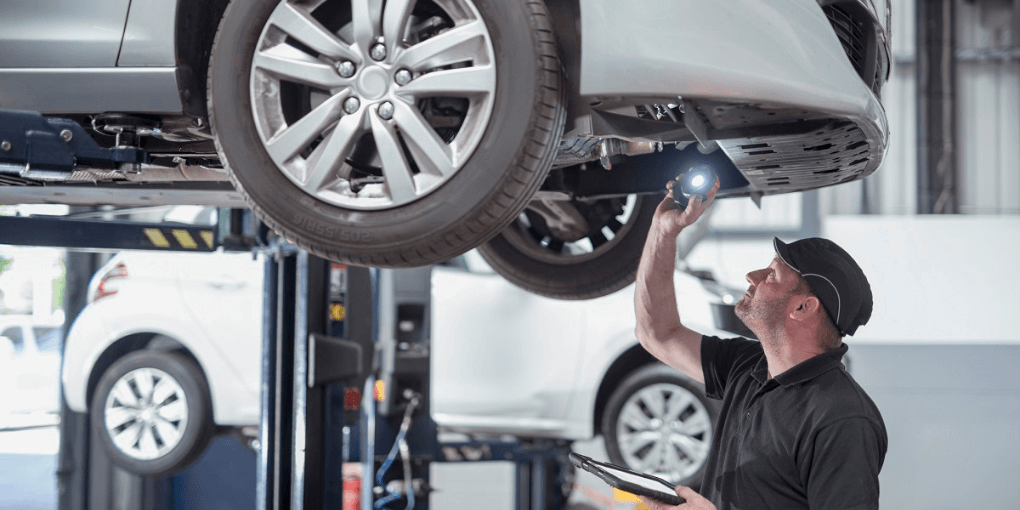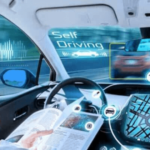In recent years, electric cars have rapidly gained popularity, revolutionizing the automotive industry and redefining the way we think about transportation.

With their eco-friendly nature, reduced carbon emissions, and lower operating costs, electric vehicles (EVs) have become an attractive choice for environmentally conscious consumers and forward-thinking drivers alike.
As the world transitions towards sustainable energy solutions, electric cars have emerged as a driving force in shaping a greener future.
However, with any technological advancement comes the need for proper care and maintenance, and electric cars are no exception.
While the maintenance requirements of electric cars differ from those of traditional gasoline-powered vehicles, they are equally crucial for ensuring optimal performance, safety, and longevity of your EV.
In this blog post, we will delve into the world of electric car maintenance, exploring the key tasks and practices that will keep your electric vehicle in top shape.
From caring for the all-important battery to understanding the nuances of the electrical system, we will provide you with the knowledge and insights you need to become a responsible and well-informed electric car owner.
Importance of regular charging and battery health checks
Importance of Regular Charging and Battery Health Checks to Ensure Optimal Performance
One of the most critical components of an electric car is its battery, as it serves as the heart of the vehicle, providing the power needed for smooth and efficient operation.
As an electric car owner, understanding the significance of regular charging and conducting battery health checks is essential for ensuring your EV’s optimal performance and longevity.
Maximizing Range and Efficiency
Regularly charging your electric car is vital to maintaining its range and efficiency.
Keeping the battery adequately charged ensures that you can take full advantage of your EV’s driving range, allowing you to go longer distances on a single charge.
An optimally charged battery also contributes to improved energy efficiency, which translates into lower operating costs and reduced environmental impact.
Preserving Battery Life
Electric car batteries are designed to be durable and long-lasting, but they are not immune to wear and degradation over time.
Consistently monitoring and managing the battery’s health can help preserve its lifespan.
By avoiding extreme charge levels and keeping the battery within its recommended operating range, you can minimize wear and tear, prolonging the overall life of the battery.
Preventing Range Anxiety
One of the concerns among electric car owners is range anxiety – the fear of running out of charge before reaching their destination.
Regular charging and battery health checks can significantly alleviate this concern.
When you have confidence in your battery’s state of charge and health, you can plan your journeys more effectively and enjoy the convenience of electric driving without unnecessary worries.
Identifying Potential Issues
Battery health checks allow you to detect and address potential issues early on.
Monitoring metrics like state of charge, charge times, and charging patterns can reveal abnormalities that might indicate a problem with the battery or charging system.
Identifying and rectifying these issues promptly can prevent further damage and costly repairs down the road.
Ensuring Safety
Maintaining the battery’s health and charging it properly are crucial for safety reasons.
Electric car batteries contain high amounts of energy, and any malfunctions or improper charging practices can pose safety risks.
Regular checks and adherence to charging guidelines help ensure the safe operation of your electric car.
Tips for preserving battery life avoiding rapid charging
- Limit rapid charging; opt for regular or level 2 charging whenever possible.
- Plan charging sessions to maintain charge levels between 20% to 80%.
- Avoid charging to 100% daily; reserve it for longer trips occasionally.
- Be mindful of temperature extremes; park in shaded areas during hot weather and use parking structures in cold climates.
- Utilize preconditioning features to warm up or cool down the battery and cabin before driving in extreme temperatures.
- Avoid leaving the battery at a low state of charge if the electric car won’t be used for an extended period.
Electric Car Maintenance Tasks
Maintaining an electric car is essential for ensuring its peak performance, longevity, and safety. While electric vehicles (EVs) have fewer moving parts than traditional gasoline cars, they still require regular upkeep.
Here’s an overview of some basic maintenance tasks to keep your electric car in top shape:
Regular Charging
- Charge the EV regularly to maintain optimal battery health and range.
- Aim to keep the battery charge level between 20% to 80% for ideal performance.
Battery Health Checks
- Monitor the battery’s state of charge and health through the vehicle’s dashboard or mobile app.
- Schedule periodic battery health checks with a certified technician for a comprehensive assessment.
Tire Care
- Regularly inspect tire pressure and ensure it’s within the recommended range.
- Rotate and balance tires periodically to extend their lifespan and maintain even wear.
Brake System Maintenance
- Electric cars use regenerative braking to recharge the battery during deceleration.
- Periodically inspect the traditional brake components, such as brake pads and rotors, for wear.
Cooling System Check
- Ensure the cooling system is functioning correctly to prevent battery overheating.
- Monitor temperature levels during charging and driving to avoid potential issues.
Software Updates and Firmware
- Keep the vehicle’s software up to date to access the latest features and improvements.
- Check for firmware updates that may enhance the EV’s performance and efficiency.
Electrical System Inspection
- Regularly inspect cables, connectors, and electrical components for signs of wear or damage.
- Address any electrical issues promptly to ensure safe operation.
Exploring the benefits of electric car maintenance
Electric car maintenance is a vital aspect of owning and enjoying an electric vehicle.
While electric cars offer numerous advantages over traditional gasoline-powered vehicles, proper maintenance further enhances their benefits and ensures a seamless driving experience.
Let’s explore the various advantages that come with responsible electric car maintenance:
Optimal Performance
- Regular maintenance keeps the electric car in top shape, maximizing its overall performance.
- Well-maintained batteries and electrical systems deliver better acceleration, range, and efficiency.
Extended Battery Life
- Following battery health guidelines and charging best practices prolongs the battery’s lifespan.
- Preserving the battery’s health reduces the need for premature replacements, saving money in the long run.
Lower Operating Costs
- Properly maintained electric cars have lower operating costs compared to gasoline cars.
- Reduced maintenance requirements, lower fuel costs, and potential tax incentives contribute to cost savings.
Environmental Impact
- Regular maintenance promotes energy efficiency, reducing carbon emissions during driving.
- By taking care of your electric car, you actively contribute to a cleaner and greener environment.
Safety and Reliability
- Well-maintained electrical and braking systems ensure safer driving experiences.
- Regular inspections prevent potential issues, minimizing the risk of breakdowns and accidents.
Preserving Resale Value
- Electric cars with a documented maintenance history tend to retain higher resale values.
- Potential buyers are more confident in purchasing well-maintained vehicles, which benefits the seller.
Charging Infrastructure and Best Practices
Certainly, here’s a step-by-step guide to understanding the charging infrastructure of electric cars:
Step 1: Understanding the Basics
Start by familiarizing yourself with the key concepts of charging infrastructure for electric cars:
- Charging Levels: Electric vehicle charging is categorized into different levels based on charging speed. These include Level 1 (standard household outlet), Level 2 (240V charging), and Level 3 (DC fast charging).
- Charging Standards: Different charging connectors and standards are used globally, including CHAdeMO, CCS (Combined Charging System), and Tesla’s Supercharger network. Familiarize yourself with the standards relevant to your region and EV model.
Step 2: Types of Charging Stations
Discover the various types of charging stations available:
- Level 1 Charging: Understand that Level 1 charging utilizes a standard household outlet (120V) and provides a slow charging rate. It’s suitable for overnight charging at home.
- Level 2 Charging: Know that Level 2 charging stations use a 240V power supply and offer faster charging compared to Level 1. They are commonly found in residential areas, workplaces, and public locations.
- DC Fast Charging (Level 3): Learn about DC fast chargers, which use direct current to rapidly charge EV batteries. They offer high charging speeds and are typically located along highways for long-distance travel convenience.
Step 3: Charging Network Development
Understand the development and expansion of charging networks:
- Government Initiatives: Many governments are investing in EV infrastructure, including charging stations, to promote sustainable transportation.
- Private Investments: Private companies and organizations are also establishing charging networks to support the growing demand for EVs.
Step 4: Charging at Home
Learn about charging options at home:
- Level 2 Home Charging: Consider installing a Level 2 charging station at your residence for convenient overnight charging. This involves professional installation of the charging equipment and possibly upgrading your home’s electrical infrastructure.
Step 5: Charging Costs and Payment
Understand how charging costs work:
- Cost Factors: Charging costs depend on electricity rates, charging speed, and location. Some stations offer free charging, while others charge a fee based on kilowatt-hours or time spent charging.
- Payment Methods: Familiarize yourself with different payment methods, such as charging station apps, RFID cards, and credit cards, to access and pay for charging services.
Step 6: Charging Apps and Services
Explore charging-related apps and services:
- Charging Station Locators: Download apps that provide real-time information about charging station locations, availability, and compatibility with your EV model.
Step 7: Future Expansion and Trends
Stay informed about the future of charging infrastructure:
- Ongoing Expansion: Recognize that charging networks are continually expanding to meet the increasing demand for electric vehicles.
- Innovation: Stay updated on innovations in charging technology, such as higher charging speeds and improvements in battery technology.
Conclusion
The maintenance landscape for electric cars represents a departure from traditional internal combustion engine vehicles.
With simplified mechanical components, reduced fluid maintenance, and prolonged brake longevity, electric car maintenance introduces a more streamlined and sustainable approach.
The emphasis on battery care, software updates, and professional expertise ensures the longevity and optimal performance of electric vehicles.
As the world embraces the shift towards eco-friendly transportation, understanding and adhering to the unique maintenance requirements of electric cars will play a pivotal role in shaping the future of automotive sustainability.

Sudatta is a passionate automotive enthusiast and expert in the field. With a keen eye for detail and a love for all things automotive, he shares insightful articles and reviews to ignite the automotive passion in readers.



